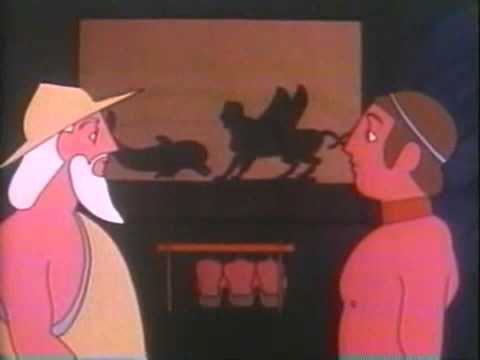“‘Inability to accept the mystic experience is more than an intellectual handicap.” ~ Alan Watts

The intellect, the rational reasoning part of ego, wants to know everything. At least, it is true of this writer. It is human nature to want to understand life, the nature of the universe and our place in it, our experiences, and our purpose. What does it all mean?
We could say that the quest began with simple logic; philosophy and science born of the Renaissance have given us a rational means by which we can make such queries. There is, however, a fundamental problem that will eternally impede our efforts. As much as we humans celebrate how precisely we can model the universe with the rational scientific methods we have devised, we are only able to do so with an infinitesimal fraction of ultimate reality.
It appears that something beyond intellect is required to access the majority of what we are calling ultimate reality, something beyond the material, corporeal world. Looking beyond the corporeal thus implies an exposure to the spiritual world. For this sake of the article, let us say then that the composite of reality includes both material (rationally accessible) and spiritual (not rationally accessible) domains. If so, how do we access the spiritual domain?
First, let’s examine what we think we know about reality. We learn in elementary school science something about atomic structure and that the atom is mostly empty space. A hydrogen atom is more than 99.999% empty space. Yet, there is something even more unsettling than all matter being mostly empty space.
The observable universe consists of mass and energy whereby only 4.9% of the matter is ordinary matter. The remaining non-directly observable constituency of the universe has been relegated by mathematical models to what is called dark energy and dark matter; the make-up is roughly 68.3% dark energy and 26.8% is dark matter. Thus, we know that we have only observed 4.9% of the universe which is for the most part empty space.
Another thing that mathematical models speculate is that reality is far more dimensional than the 3-dimensional world known to our senses, or 4-dimensional world including the intellectual perception of time. Discussion of higher dimensions is beyond the scope here, but we can examine the notion briefly enough to understand the implications.
Recall Plato’s allegory of the cave in his Republic. Assume cave dwellers have been imprisoned since childhood, chained so that they could not see one another but only a wall that sits before them.
(This is a thought experiment, so life’s necessary activities like eating, going to the bathroom, hygiene and such should be suspended.) Behind them is light source. Between the light source and the prisoners, people are walking carrying objects and performing various actions.
To the prisoners their entire reality is based on shadows that fall on the wall before them. Whatever their other senses – sounds and smells – tell them will be attributed to these shadows that make up the world as they know it. Plato’s cave goes on to describe the experience of a freed prisoner and his interaction with those still imprisoned and how unbelievable the enlightened tales of the real world sound to the uninitiated.
I’ll leave it to the reader to explore this classic allegory. My intent is to introduce the concept of a lower level projection (a two-dimensional shadow) from a higher level domain (a three-dimensional world).
A more developed sense of higher dimensions and projections was treated in several 19th century works, most notably those by Charles Howard Hinton who coined the term tesseract, as the fourth dimensional analog of the cube in his work “A New Era of Thought.” Hinton’s writings influenced P.D. Ouspensky and Claude Bragdon, who in his book “A Primer of Higher Space” illustrated Hinton’s ideas.
Like Plato’s cave, a projection of a cube (its cross-section) would appear on the wall as a 2-dimensional square or, depending on its alignment with the light source, any one of a number of polygons. A perfectly normal cross-section of a cube is a square. A cross-section of a square is a 1-dimensional line.
Its cross-section is a point source. Now we must ask what kind of object exists in 4-dimensional space such that its projection in 3 dimensions is a cube? The answer is the tesseract and it is not something one can grasp easily with the intellect.

And what of higher dimensions? Contemporary cosmological models, one such being string theory, describe a universe of perhaps 10 or 11 spatial dimensions. To the rational mind the universe begins to look mighty irrational. Using only the senses, including instrumentation to improve sensitivity and accuracy, we can only intellectualize a fraction of the spatial dimensions of the universe.
Within the 3-dimensional fraction of reality, we only sense 4.9% of the matter which is greater than 99.999% empty space. So, exactly what are we attempting to model with theoretical and repeatable experimental methods based on laws that govern only a fraction of the whole?
When one recalls Shakepeare’s quote in Hamlet, “There are more things in heaven and earth, Horatio, than are dreamt of in your philosophy,” this should crystallize in one’s mind: to better understand our place in the universe and to become fully self-actualized, we must nurture our spiritual connections to that which lies beyond the veil of logic and science.
There are many tools and techniques to explore. Exercise in this manner, practice as it may be called is really religion with a lower case “r.” Set aside monotheism, polytheism, atheism or every “-ism” for that matter. Set aside all dogma and religion with an upper case “R.” The intellect mandates that we lead a spiritual life to reach our highest potential. What separates intellectus from spiritus is the ego; and there lies the rub!
Image Source




